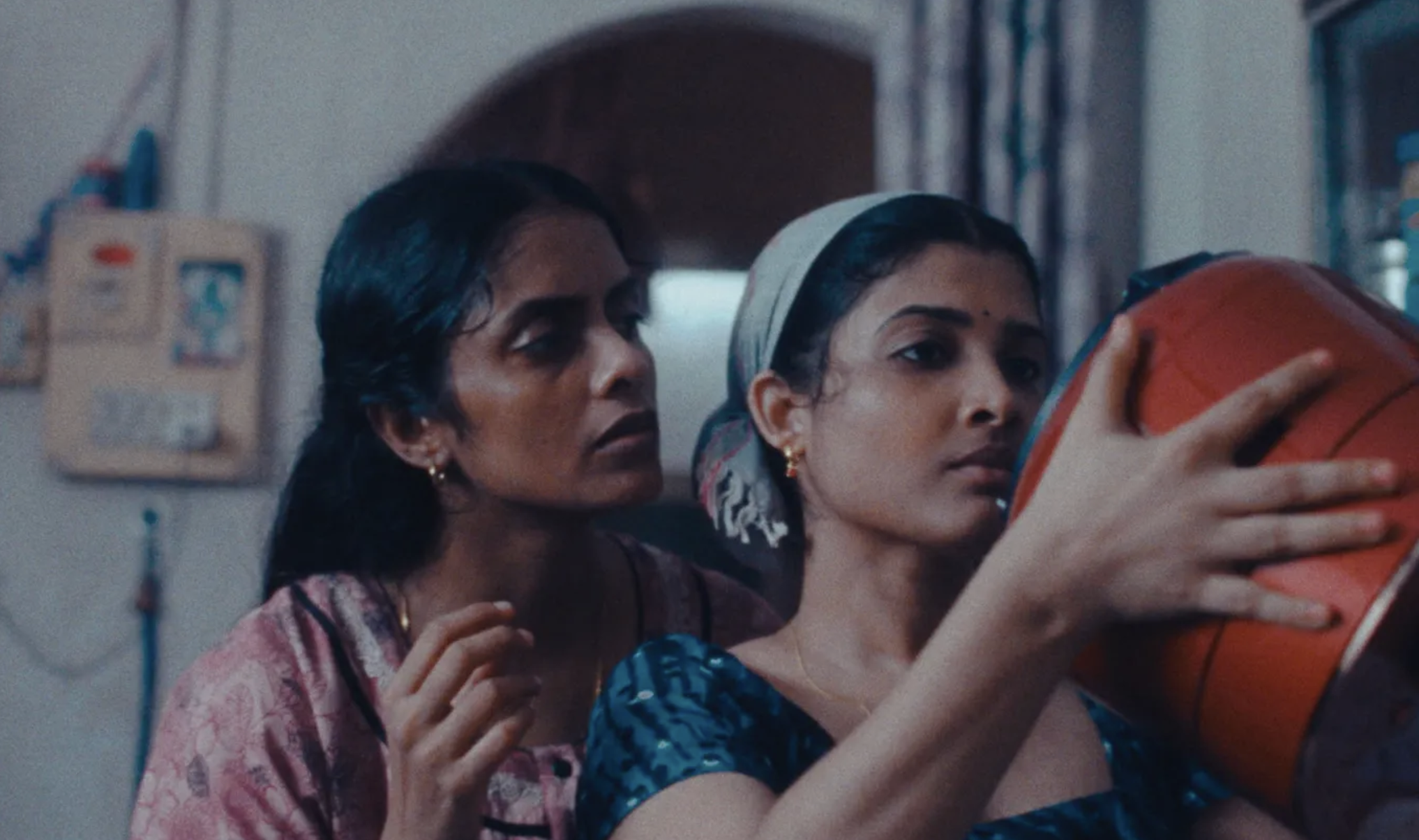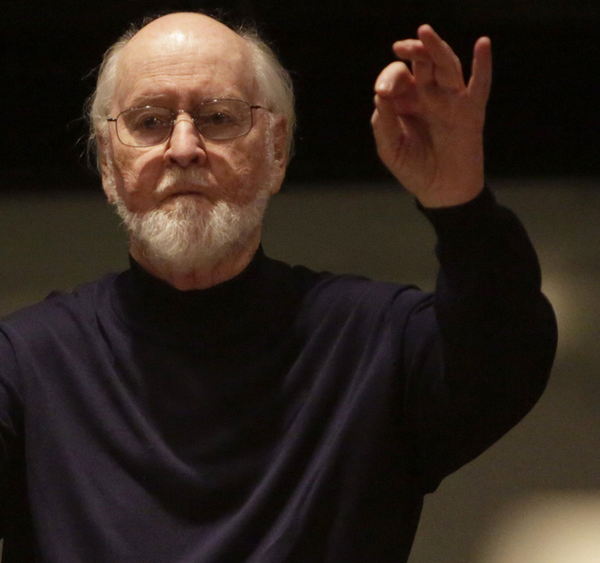It’s been 30 years since a film from India has been selected in the main competition at Cannes, but that finally changed this year.
Recent editions of Sundance, Tribeca, and Toronto have included riveting and even Oscar-nominated documentaries and features. In fact, Mira Nair’s “Monsoon Wedding” won the Golden Lion at Venice more than two decades ago. Granted, Cannes has recently programmed South Asian gems in other sections, such as the Queer Palm-winning “Joyland” from Pakistan in Un Certain Regard in 2022, or Anurag Kashyap’s “Kennedy” in Midnight last year. But would the South Asian drought in the main competition ever end?
Many were ecstatic last month when “All We Imagine as Light”, Mumbai-based Payal Kapadia’s narrative directorial debut, was announced in the competition lineup alongside legendary Cannes regulars: European heavyweights such as Jacques Audiard and Yorgos Lanthimos, American auteurs David Cronenberg and Paul Schrader, and Asian visionary Jia Zhangke.
Kapadia is no stranger to Cannes; her short, the tone poem “Afternoon Clouds,” screened there in 2017, and her politically searing hybrid documentary “A Night of Knowing Nothing” won the L’Œil d’Or in 2021. But she has the unique distinction of being the first South Asian woman director in competition.
In addition, British Indian writer-director Sandhya Suri’s narrative feature debut “Santosh” was selected for Un Certain Regard, and premiered on Monday. Two female feature directors of Indian origin in the Official Selection is a minor miracle, especially given Cannes’ notoriety for overlooking women directors, let alone those of color. (Both “All We Imagine” and “Santosh” have already found U.S. distribution out of the festival.)
Kapadia, speaking to IndieWire a few days before the premiere at the Grand Theatre Lumiere on May 23, appeared unfazed by the hype around the 30-year gap of Indian filmmakers in competition. Instead she laughed, “We should ask them this question. We’ve always had great filmmakers. [Only] now they are realizing that we have amazing films. Even our mainstream films are on par with any big festival. But I suppose many filmmakers don’t even [submit] because, in India, there is such a huge audience. We have our own ecosystem for films; there’s no need for a Western platform.”

She reflected on her training at the Film and Television Institute of India (FTII), one of the nation’s most renowned film schools. At FTII, “I watched a lot of European films. That is a language I have in a lot of my work, so perhaps it becomes easier for people from Western countries that I am referencing this kind of cinema. Maybe it fits well with their programming narratives?” she said. Also, unlike the majority of filmmakers from the subcontinent, she has French co-producers. Thomas Hakim and Julien Graff of petit chaos were also her collaborators on “The Night of Knowing Nothing.” “I like the French system,” Kapadia said. “It’s not one way is better, whatever works for you.”
Is it a coincidence that Suri, too, has a French connection? She is a French citizen, while the film, majority British funded (by Mike Goodridge and James Bowsher of Good Chaos), has some French and German participation. The script was developed in part at the Sundance Labs in 2016, where she gained advice from the likes of Glenn Close and Rodrigo Prieto; Thomas Bidegain, Audiard’s frequent collaborator, was especially helpful. Suri’s producers and mentors were drawn to the strength and surprises in the script. Is producing and financial support from outside India key to be noticed by Cannes’ selection committee?
Thierry Frémaux, the General Delegate of Cannes and programming kingmaker, when asked this question at a press conference last week, deflected. And to be fair, Kapadia pointed out that her short at Cannes was a “random” film school submission. Plus, other South Asian films that have played Un Certain Regard don’t necessarily have European bonafides.
What Kapadia and Suri’s movies do share — at the levels of training, story, theme, form, and even politics — is far more fascinating and should drum up industry and jury proclivity toward their films. Both filmmakers share a documentary background, despite different approaches to traversing the boundaries of fiction and nonfiction, and both undertook extensive field research before forming story worlds and characters.
Suri, who has worked with NGOs in small towns of India concerned with violence against women, said she wanted to “dissect violence and come in from inside. I thought it was very difficult to do in a documentary. How to bring understanding if I just show it?”

All that changed when the landmark Nirbhaya rape case shook the nation in 2012. Suri saw an image of a huge crowd of angry female protestors, faces contorted with rage, and a line of female police officers, forcing them back. “One of these police officers had such an enigmatic expression,” she said. “I became fascinated with her, her power, and her perspective on their powerlessness, anger, and violence. I thought that was a very interesting lady to tell the story.”
That’s when she opted for a fiction feature and realized, “I’m making a genre film now. What do I know about that? To feel safe making fiction, I felt I had to do very thorough research. I didn’t want to make a fantasy or ghost or a police film.”
From there, Suri started to research female constables and interview police anthropologists. In this process, she learned of an archaic government scheme of “appointment on compassionate grounds”,” meaning that eligible dependents of deceased police officers can inherit their husbands’ jobs. Suri spoke to many such widows, thereby creating the character Santosh.
This idea, of a journey of an underprivileged, sheltered housewife from widow to police officer — and one who battles in a “morally murky universe,” where violence, casteism, religious intolerance, and misogyny hang casually in the air — is what she wanted to write about. (“Santosh,” shot over 44 days in northern India’s rural hinterlands, is set in fictional Chirag Pradesh; “chirag” ironically means “the light of a lamp” in Hindi.) “There’s police brutality in hundreds of Bollywood films,” said Suri. “What I was very keen to do was to not make a film about one good cop in a rotten system. I wanted my heroine to find her own shade of gray, her own limit in this setting.”
By contrast, Kapadia’s film, about two migrant nurses in Mumbai negotiating an estranged husband and a risky boyfriend even as their colleague is forced to return to her village, had two inspirations that emerged from her research: Central Mumbai’s abandoned cotton mills, and Malayali women who migrate alone from the southern state of Kerala.
Of the former, Kapadia said, “I grew up at a time where I would hear the sirens of the mills everyday. As we grew older, the mills disappeared. One became a discotheque, another a high-end luxury mall. I have seen the gentrification of the area, of chawls turning into massive gated complexes. It struck me that [builders] wanted to erase history in some way.”

When she began doing research in 2022, Kapadia met some “comrades who are still now fighting for the rights of the mill workers and their housing. Recently, the movement has been revived by their children. The mills were given at a subsidized rate to the workers, so when the mills shut down, it was only right that the workers and their families get a place to stay. This is not what happened. A lot of them were swindled out of their land, as we know,” Kapadia said.
Unlike “Santosh,” where the themes of institutionalized misogyny and individual corruption directly inform the characters’ arcs, in “All We Imagine as Light,” the labor and land rights issues exist more in the background, informing the journey of just one character. Kapadia feels there’s a lot more story where that came from, which could be showcased another film.
Directly explored in Kapadia’s film is the professional sociology of nursing, and the inner lives of migrant nurses. “My beginning point was women who came to Mumbai to provide for their families back home. The nursing profession is very difficult, hands on, with many long hours. A noble profession, well regarded in states like Kerala,” she said. “These women are supposed to be giving a lot of their lives to the patients. What about their own personal lives and turmoil, and the friendships among these women, is what I began to get interested in. It’s the new families we make because sometimes our own families let us down.”
Both Suri and Kapadia credit their lead actors for diving deep into their characters: Shahana Goswami in “Santosh” and Kani Kusruti and Divya Prabha in “All We Imagine.” Suri’s casting director suggested Goswami on the very last day of casting, though she wasn’t the right age range. But when she walked in, Suri says saw in Goswami the “right mix of hardness and sweetness, anger held within restraint. She is called ‘Santosh,’ which means ‘satisfaction.’ It is about somebody who is hungry for more. She doesn’t know that in her married life. Later, she gets put in an arena where she realizes what she does and does not want. She’s a bit like a fish. She’ll maneuver. She’ll play chess.”

Kusruti, meanwhile, is an actor fast rising in the global independent film circuit (most recently she appears in Shuchi Talati’s “Girls Will Be Girls,” which won an Audience Award at Sundance and is screening in the Cannes Écrans Juniors category). Kapadia first saw her in a short, “Memories of a Machine,” impressed by Kusruti’s direct deliveries to the camera.
A key challenge in “All We Imagine as Light” is that Kapadia speaks only Hindi, Gujarati, and Marathi, whereas Kusruti’s character speaks Malayalam. So the two collaborated closely, rehearsing and changing lines, and forming a nuanced understanding of the social milieu. Kusruti’s background in theater and her general versatility allowed her to internalize gestures. Kapadia, who finds fiction often a bit rigid, gets joy from “filmmaking as stitching and knitting, where you can put things inside and see voila what that makes.”
Suri and Kapadia’s years of meticulous research, ethnography, and interest in how female characters regard each other in the everyday of their precarious professions — how they remain “unknowable,” as Suri said of Santosh’s complicated boss Sharma, played with great vulnerability by Sunita Rajwar — no doubt helped find a Cannes home for their features.
“I’m a single mother. It was very hard to shoot a film in this situation. I found a way. I maneuvered. I played chess. And it worked out,” Suri said.
“Santosh,” bought by Metrograph Pictures for U.S. distribution, premiered at the 2024 Cannes Film Festival in Un Certain Regard. “All We Imagine as Light,” bought by Sideshow and Janus Films, premieres in the main competition.




